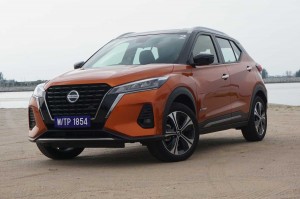Thoughts on making fuel subsidy work in Malaysia
By THE STAR | 19 May 2022
PETALING JAYA: It is common knowledge that some government subsidies are benefiting the rich more than the poor.
Just recently, Finance Minister Datuk Seri Tengku Zafrul Tengku Abdul Aziz reminded us that “for every RM1 of fuel subsidy, 53 sen goes to the T20 group while 15 sen is utilised by the B40”.
How can we make targeted fuel subsidies work? We all remember the petrol subsidy programme in 2019 that never materialised. Back then, some complained about the mechanism while others griped about the thresholds used.
The problem, like many others that we face as a nation, was that the matter was not widely discussed and debated. We should all agree on the facts and deliberate on the numbers. It makes very little sense for people owning luxury vehicles to enjoy fuel subsidies.
However, nobody likes to be singled out for unjust treatment, especially the rich and powerful who believe they have more than paid their fair share.
Consider the EPF contributions and the annual dividend payout. At face value, it seems fair that everyone gets, say, a 6% dividend rate at a given year.
Unfortunately, for low-income earners with little accumulated savings, their actual return is dwarfed in comparison to high net-worth individuals.
There is a simple solution to make EPF more equitable – set a contribution ceiling as has been done in Singapore since the late 1980s. EPF should only accept contributions up to a fixed amount annually; in the Lion City, the ceiling is between S$31,450 and S$37,740 or a CPF (Central Provident Fund) annual limit that is equivalent to 17 months of CPF salary ceiling of S$6,000 at 37%.
Similarly, we do not need to invent a new mechanism to pass the cost of fuel subsidies to the undeserving by fudging around with measures that might invite more trouble than necessary.
Although I personally support the development of population or household registry (just one step away from our current National Registration System) to improve subsidy targeting, we can achieve the same effect by increasing the road tax for luxury cars every year. This would be a quick, short-term measure that could be implemented immediately.
Simply put, we just calculate a premium for the road tax of such vehicles that can be adjusted every year according to fluctuations in oil and gas prices. This would help us to make full use of any existing mechanisms by adding other desired features.
This is, of course, just a suggestion and I am sure there are many other ways to skin a cat, so to speak, without convoluted mechanisms. It is difficult to compare with Singapore’s additional registration fee (ARF) on open market values (OMV) for vehicles, but there is definitely a lot of room for fiddling in this aspect for Malaysia.
I know our cars ARE overpriced, but that is another problem for another day. The cost of buying a car and maintaining it cannot be separated from the fuel subsidies we enjoy at the pump, depending on our average consumption.
All I hope for is that there are robust debates, consultations and consideration of multiple viewpoints. Try to find an elegant solution that does not involve additional or hidden costs, and hopefully no unnecessary enrichment of well-connected third parties!
For the rich who own luxury vehicles, you still have many choices to game the system (like getting a cheaper car), and that is why this is just a temporary measure until we have better policies in place to make sure redistribution and risk-pooling happen in the background without disincentivising financial success.
If owning a Bentley is a status symbol, the higher road tax would probably make it even more exclusive, no? For those who paid over a million ringgit for their Rolls Royce, Ferrari or Lamborghini, what is another RM20,000 for the annual road tax, right? — CHAI SEN TYNG
> Chai Sen Tyng is a Star reader from Seri Kembangan, Selangor, who wrote in to the Letters section of the newspaper to voice his opinion on fuel subsidy.
Tags
Autos News
Reviews

8.8
smart #1 (Premium): Agile, engaging, roomy, premium motoring

6.6
Suzuki V-Strom 250 SX: Multi terrain warrior

Proton e.MAS 7 impresses in quick dynamic driving exercises

Nissan Kicks e-Power: Kicking off a new efficiency

6.8
Mercedes-Benz GLB 200: Measured versatility

MG5: Slick and comfortable cruiser

8.2
Kia EV9: Prime cut

8.0
Triumph Tiger 1200 GT Pro: High adventure on two wheels
Videos

The Snowball – Lamborghini’s Heartwarming Christmas Story of...

EVOGO battery swapping solution showcased at IAA Mobility 20...

Jaguar's Bold Type 00 Concept: A Glimpse into the Future of ...
